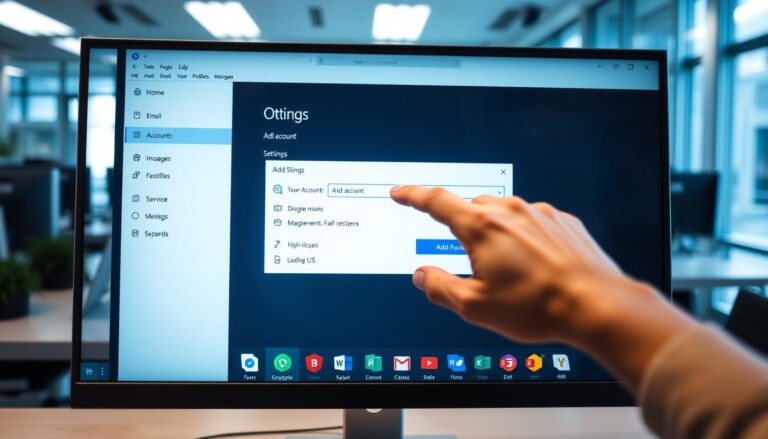Mastering Slack: How to Leave a Slack Channel with Ease
Slack is a popular communication tool used by teams to collaborate and stay connected. One of the features of Slack is the ability to join and leave channels, which are group chat rooms where discussions and updates related to specific projects or topics take place. If you find yourself overwhelmed or no longer interested in a particular channel, leaving it is a simple process that can help declutter your workspace and focus on what’s important.
Key Takeaways:
- Leaving unnecessary Slack channels can help declutter your workspace and increase your focus.
- The process to leave a Slack channel is simple and straightforward.
- You can easily rejoin a Slack channel if you change your mind.
- Regularly reviewing and leaving irrelevant channels can optimize your Slack experience.
How to Leave a Slack Channel: Step-by-Step Guide
Slack is a popular communication tool used by teams to collaborate and stay connected. One of the features of Slack is the ability to join and leave channels, which are group chat rooms where discussions and updates related to specific projects or topics take place. If you find yourself overwhelmed or no longer interested in a particular channel, leaving it is a simple process that can help declutter your workspace and focus on what’s important.
To leave a Slack channel, follow these steps:
- Open the Slack app or sign into the Slack website. This will take you to your default Slack channel, usually the “#general” channel.
- Open the channel you want to leave by clicking or tapping the channel name. You can select your channels from the sidebar menu.
- Type “/leave” into the message field and press Enter or tap the Send button. This command will remove you from the channel and take you to your last active channel.
It’s important to note that you cannot leave the “#general” channel, as it is a default channel that all members are part of. Additionally, if you leave a private channel, you will need to be added back by another member if you wish to rejoin in the future.
By leaving unnecessary channels, you can reduce the noise and focus on the channels that are relevant to you. However, leaving a channel doesn’t mean you can never return. If you’ve left a channel but change your mind, you can easily rejoin it by following these steps:
- Type the name of the channel you’ve left in the search bar at the top of your workspace.
- Select the correct channel from the search results.
- Click or tap the “Join Channel” button.
This will allow you to rejoin the channel and continue your participation in the discussions.
It’s a good practice to regularly review your Slack channels and leave ones that are no longer relevant or useful to you. If you find yourself overwhelmed by the number of channels you’re subscribed to, consider conducting an audit and leaving channels that don’t align with your priorities or interests.
By keeping your Slack usage focused and organized, you can increase your productivity and avoid distractions. Remember to utilize Slack’s search and notification features to stay updated on important conversations and topics without being overwhelmed by unnecessary information.
Conclusion
Leaving a Slack channel is a simple process that can help you declutter your workspace and stay focused. By regularly reviewing and leaving irrelevant channels, you can optimize your Slack experience and make sure you’re spending your time and energy on what truly matters.
Leaving a Slack Channel
By leaving unnecessary channels, you can reduce the noise and focus on the channels that are relevant to you. However, leaving a channel doesn’t mean you can never return. If you’ve left a channel but change your mind, you can easily rejoin it by following these steps:
- Type the name of the channel you’ve left in the search bar at the top of your workspace.
- Select the correct channel from the search results.
- Click or tap the “Join Channel” button.
It’s important to note that some channels may require approval from a channel admin to rejoin. If you’re unsure how to rejoin a particular channel, reach out to the channel admin or a team member for assistance.
Leaving a Slack channel not only helps declutter your workspace, but also ensures you’re focusing on the channels that align with your interests and priorities. It’s a good practice to regularly review your channels and leave ones that are no longer relevant or useful to you. This will help streamline your Slack usage and increase your productivity.
Remember, Slack is a tool for communication and collaboration. By optimizing your channel usage and keeping your workspace organized, you can make the most of your Slack experience and stay connected with your team.
How to Rejoin a Slack Channel
If you’ve left a channel but change your mind and want to rejoin it, Slack makes it easy to do so. Here’s how:
- Type the name of the channel you’ve left in the search bar at the top of your workspace.
- Select the correct channel from the search results.
- Click or tap the “Join Channel” button.
Once you’ve rejoined the channel, you can continue participating in the discussions and receiving updates. However, keep in mind that if you’ve left a private channel, you will need to be added back by another member if you wish to rejoin in the future.
Optimizing your Slack channel usage means regularly reviewing your channels and leaving ones that are no longer relevant or useful to you. If you find yourself overwhelmed by the number of channels you’re subscribed to, consider conducting an audit and leaving channels that don’t align with your priorities or interests. By keeping your Slack usage focused and organized, you can increase your productivity and avoid distractions.
Optimizing Slack Channel Usage
By keeping your Slack usage focused and organized, you can increase your productivity and avoid distractions. Remember to utilize Slack’s search and notification features to stay updated on important conversations and topics without being overwhelmed by unnecessary information.
One way to optimize your Slack usage is to regularly review your channels and leave those that are no longer relevant or useful to you. This can help reduce clutter and make it easier to find important discussions and updates.
To review your channels, click or tap on the sidebar menu and select “All Channels.” This will display a list of all the channels you’re subscribed to, including those that are public and private. Take a moment to review the channels and consider which ones align with your priorities and interests.
Once you’ve identified channels that you no longer need, you can leave them by following the steps outlined in the previous section. This will help you streamline your Slack experience and avoid distractions from irrelevant conversations.
Another way to optimize your Slack usage is to prioritize your channels. Consider which channels are the most important for your work and place them at the top of your sidebar menu. You can do this by clicking and dragging the channel names to reorder them. This will make it easier to access the channels that are most relevant to you.
You can also reduce clutter in your channels by streamlining your communication. Rather than creating multiple channels for different purposes, consider consolidating them into a single channel. This can make it easier to find relevant information and reduce the number of notifications you receive.
By optimizing your Slack channel usage, you can make the most of this powerful communication tool and stay focused on what’s important. Remember to regularly review your channels, prioritize those that are relevant to you, and streamline your communication to avoid distractions.
Conclusion
In conclusion, leaving a Slack channel is a simple process that can help you declutter your workspace and stay focused. By regularly reviewing and leaving irrelevant channels, you can optimize your Slack experience and make sure you’re spending your time and energy on what truly matters.
To leave a Slack channel, simply open the channel you want to leave, type “/leave” into the message field, and press Enter or tap the Send button. If you change your mind and want to rejoin a channel, search for the channel name, select the correct result, and click or tap the “Join Channel” button.
Regularly reviewing your Slack channels and leaving those that don’t align with your priorities or interests can help reduce noise and increase productivity. Utilize Slack’s search and notification features to ensure you stay updated on important conversations and topics without being overwhelmed by unnecessary information.
Overall, mastering Slack involves optimizing your channel usage and keeping your workspace organized. Leaving unnecessary channels is just one step in achieving this goal, but it is an important one that can have a significant impact on your productivity and focus.
FAQ
Q: How do I leave a Slack channel?
A: To leave a Slack channel, open the Slack app or sign into the Slack website. Open the channel you want to leave and type “/leave” into the message field. Press Enter or tap the Send button to remove yourself from the channel.
Q: Can I rejoin a channel after leaving it?
A: Yes, you can rejoin a channel after leaving it. To do so, type the name of the channel in the search bar, select the correct channel from the search results, and click or tap the “Join Channel” button.
Q: Are there any channels that I cannot leave?
A: You cannot leave the “#general” channel, as it is a default channel that all members are part of. You will also need to be added back by another member if you leave a private channel and wish to rejoin in the future.
Q: How can I optimize my Slack channel usage?
A: To optimize your Slack channel usage, regularly review and leave channels that are no longer relevant or useful to you. Conduct an audit and leave channels that don’t align with your priorities or interests.
Source Links
- https://slack.com/help/articles/201375146-Leave-a-channel
- https://www.adaptavist.com/blog/how-to-leave-slack-channels
- https://www.wikihow.com/Leave-a-Channel-on-Slack
- About the Author
- Latest Posts
Mark is a senior content editor at Text-Center.com and has more than 20 years of experience with linux and windows operating systems. He also writes for Biteno.com

